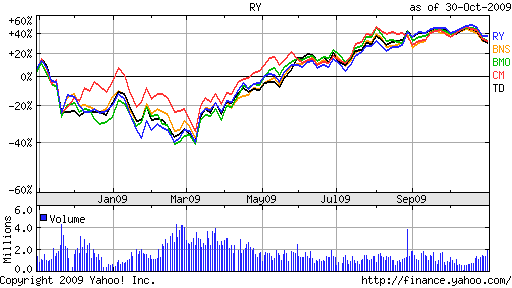The S&P; ADR Index is up 30.18% YTD. As Canada is a resource-rich country, nine Canadian companies are part of the materials component of this index. The majority of these companies are gold miners.
The Nine Canadian Basic Materials sector stocks that trade in the NYSE are:
- Agnico Eagle Mines Ltd (AEM)
- Agrium Inc. (AGU)
- Barrick Gold Corp(ABX)
- Goldcorp Inc (GG)
- Kinross Gold Corp (IAG)
- IAMGOLD Corp (KGC)
- Potash Corp. (POT)
- Teck Resources Limited (TCK)
- Yamana Gold Inc. (AUY)
Potash and Agrium are large agricultural products producers with operations mainly in fertilizer manufacturing. Both of them had great runs in the past when food prices soared worldwide and the demand for commodities increased several fold from emerging market countries. Higher global demand for fertilizers and seeds in the future will benefit these companies. With the spot price of gold rising to a record $1,084.90 per oz yesterday some are predicting that it will go even higher.A journal article says that the next stop may be $1,100.
